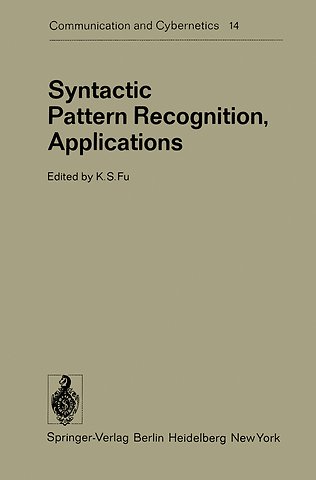Syntactic Pattern Recognition, Applications
Samenvatting
The many different mathematical techniques used to solve pattem recognition problems may be grouped into two general approaches: the decision-theoretic (or discriminant) approach and the syntactic (or structural) approach. In the decision-theoretic approach, aset of characteristic measurements, called features, are extracted from the pattems. Each pattem is represented by a feature vector, and the recognition of each pattem is usually made by partitioning the feature space. Applications of decision-theoretic approach indude character recognition, medical diagnosis, remote sensing, reliability and socio-economics. A relatively new approach is the syntactic approach. In the syntactic approach, ea ch pattem is expressed in terms of a composition of its components. The recognition of a pattem is usually made by analyzing the pattem structure according to a given set of rules. Earlier applications of the syntactic approach indude chromosome dassification, English character recognition and identification of bubble and spark chamber events. The purpose of this monograph is to provide a summary of the major reeent applications of syntactic pattem recognition. After a brief introduction of syntactic pattem recognition in Chapter 1, the nin e mai n chapters (Chapters 2-10) can be divided into three parts. The first three chapters concem with the analysis of waveforms using syntactic methods. Specific application examples indude peak detection and interpretation of electro cardiograms and the recognition of speech pattems. The next five chapters deal with the syntactic recognition of two-dimensional pictorial pattems.
Specificaties
Inhoudsopgave
Net verschenen
Rubrieken
- aanbestedingsrecht
- aansprakelijkheids- en verzekeringsrecht
- accountancy
- algemeen juridisch
- arbeidsrecht
- bank- en effectenrecht
- bestuursrecht
- bouwrecht
- burgerlijk recht en procesrecht
- europees-internationaal recht
- fiscaal recht
- gezondheidsrecht
- insolventierecht
- intellectuele eigendom en ict-recht
- management
- mens en maatschappij
- milieu- en omgevingsrecht
- notarieel recht
- ondernemingsrecht
- pensioenrecht
- personen- en familierecht
- sociale zekerheidsrecht
- staatsrecht
- strafrecht en criminologie
- vastgoed- en huurrecht
- vreemdelingenrecht
